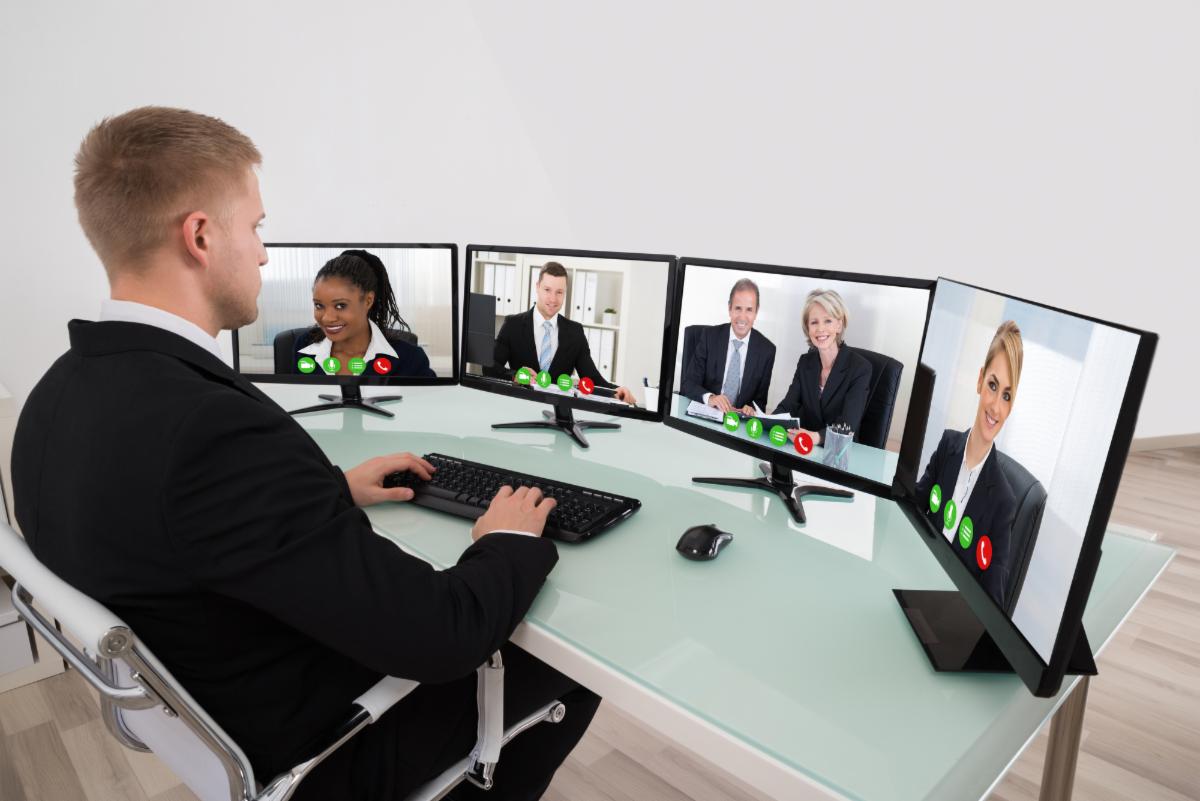 In the past few weeks, I have participated in many virtual meetings led in Zoom, Adobe Connect, Citrix, Whereby, and other software platforms, so many that I've lost count. The whole world has suddenly gone virtual. If you are now working from home (WFH) and dealing with the issues that come with online meetings, you may have these questions:
In the past few weeks, I have participated in many virtual meetings led in Zoom, Adobe Connect, Citrix, Whereby, and other software platforms, so many that I've lost count. The whole world has suddenly gone virtual. If you are now working from home (WFH) and dealing with the issues that come with online meetings, you may have these questions:
- Is my web camera on or off when I first click that virtual meeting link?
- How do I mute myself when my dog starts barking?
- Is the cat walking across my keyboard cute or annoying?
- How do I know whether to dial in on my phone or use the computer audio?
- Where can I see people chatting? How can I chat myself? Why can't anyone see my chat comment?
- Why is the camera flipping to people as they sip their coffee or rattle their papers?
- Why am I silhouetted against my window when I'm on camera? No one can see my face!
- Is this a formal meeting or an informal meeting? Do I have to dress up?
If you have concluded that virtual meetings are both a blessing and a curse, you're not alone. Here are some ideas I wish I could convey to virtual meeting leaders everywhere:
Tell people what to expect when they click the link to join a meeting.
There are a few basics that people need to know. For example, will people automatically join on web camera? Do you prefer that they dial in on a telephone bridge or use the audio through their computers or mobile devices? Do you intend to record the web meeting for later review? Be specific when you send out the meeting invitation. Note that with the demands being made right now on bandwidth given all these virtual meetings taking place, you may need to adjust standard operating procedures.
Review the technology basics prior to the meeting start time. Do a quick review for everyone when the meeting begins.
Invite people who are unfamiliar with the meeting platform to log in 15 minutes early so that you can trouble shoot technology issues before the meeting starts. Make sure everyone knows how to use the chat function, how to use the emoticons, how to mute and unmute their audio, and how to turn their web cameras on and off. Some platforms allow participants to change the way video is displayed (for example, web camera images can be displayed in grid mode, or only the video of the primary speaker may be displayed.) Let people know how they can manage those video displays.
Indicate to everyone what kind of virtual meeting you've planned (formal to informal).
The nature of the experience and the expectations of participation may be very different, depending on the type of meeting you are hosting. It makes sense to communicate how formal or informal the virtual meeting will be. A formal meeting might include senior management speakers, hundreds of employees, and limited opportunity for people to chat (though there may be a Q & A function provided). You may limit the use of web cameras to a few speakers or panelists.
Another kind of formal meeting might include your clients or prospective clients. In that case, you might expect your virtual team members to be dressed professionally with lighting on their face when they come on web camera. An informal meeting might be a weekly team call in which you expect everyone to participate fully on web camera, the chat feature is in active use, and you don't care whether children, cats, or dogs wander through the background. The point is to be clear about the type of meeting you're inviting them to join.
Pay attention to the need for connection, relationship, and inspiration.
These are challenging times with much stress and anxiety. Some people are now working from home while their children are expected to learn from home. They are struggling to keep their work environment professional while juggling family demands. Some of your co-workers may have the opposite set of circumstances: working alone and physically isolated from their colleagues, they may feel depressed and anxious. What can you do in your regular team meetings to help people connect? How can you encourage virtual relationship-building? Look for videos that make you laugh, inspire you, or motivate you. Share them at virtual team meetings. Create opportunities for people to thank each other and share good news. Close each meeting with celebration and inspiration so they go back to work on a high note.